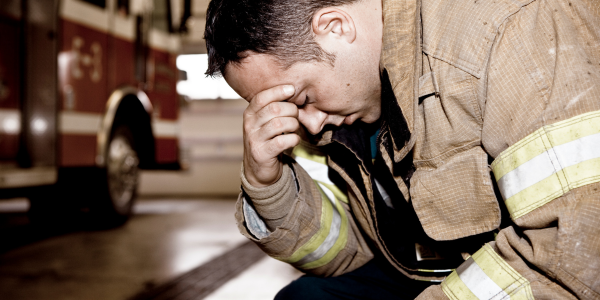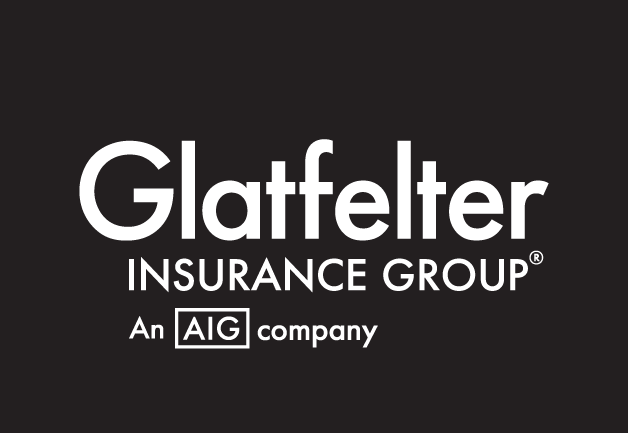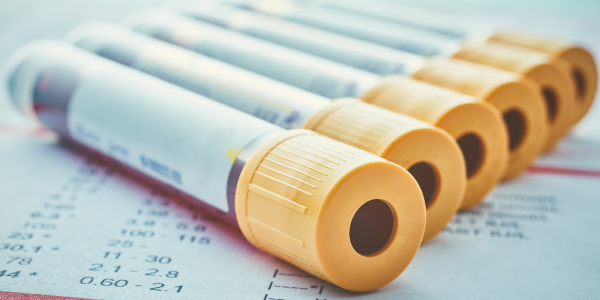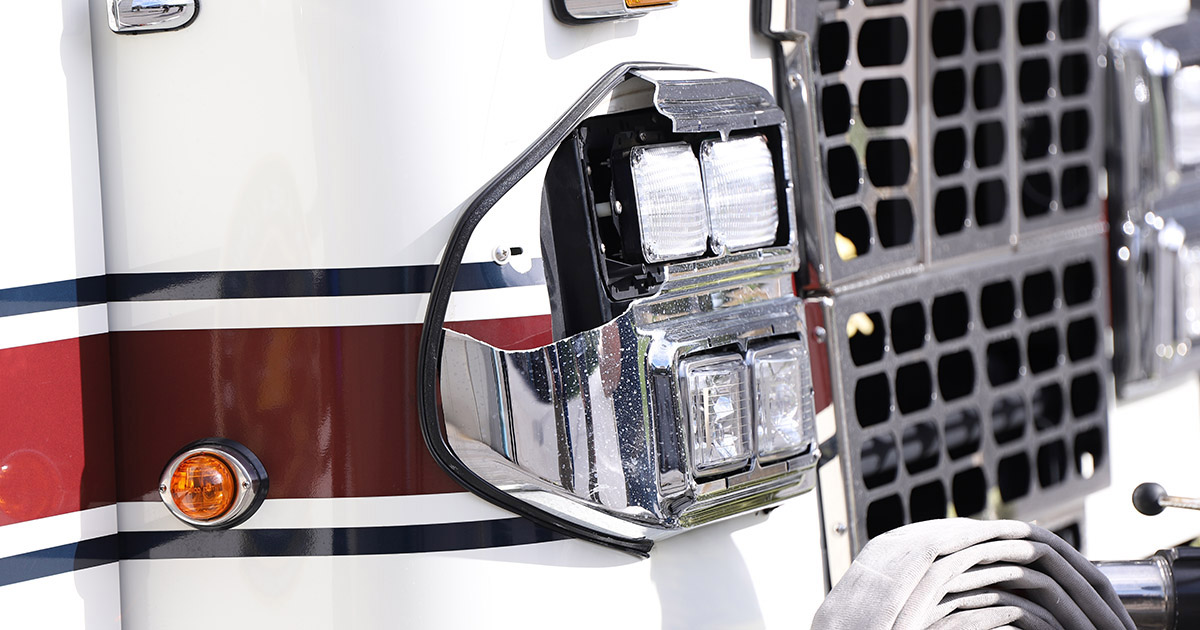Here’s a round-up of 4 new-and-evolving topics in emergency services—and reasons why you may want to pay attention to them.
1. Liquid Biopsies: A bright future for cancer diagnosis?
Imagine that determining your cancer risk was as simple as having a paramedic on your team take an hour to collect blood samples from all members and reporting back within the week… Although that’s currently too good to be true, it seems like science could be getting us there!
A liquid biopsy is a newer procedure that can detect signs of cancerous tumors in the bloodstream—making it a potentially noninvasive (performed through a simple blood draw), quick (with results in around 7-10 days says the American Society of Clinical Oncology) and cost-effective way to detect and monitor tumors.
“Liquid biopsy tests are an active area of research and development because of their potential to help providers diagnose and monitor cancer with a simple blood test. Research is underway to develop liquid biopsy tests that can do things traditional biopsy procedures can’t do, like detect cancer before a tumor has formed. Still, more research is needed to understand the potential uses of liquid biopsy,” explains Cleveland Clinic.
There are currently a few kinds of liquid biopsy tests approved by the FDA and they can be used to: predict the likely outcome for people with metastatic breast, prostate or colon cancer, detect a mutation on the EGFR gene that’s common in non-small cell lung cancer (NSCLC) and detect circulating tumor DNA in the bloodstream.
While liquid biopsies have proven to be effective in some instances, traditional biopsies (where a sample of tissues/cells from the body is removed and tested) are still considered the “gold standard” for diagnosing cancer—as there’s currently not a 100% guarantee that the signs of a tumor will be detectable in a single blood sample.
Even so, eventual advances in cancer detection could save lives—including those of firefighters, who the CDC and National Institute for Occupational Health and Safety report have a 9% higher risk of being diagnosed with cancer and 14% higher risk of dying from cancer than the general U.S. population. Hopefully, additional FDA-approved ways to use liquid biopsies will be here soon, as the American Society of Clinical Oncology notes there are currently studies to see how liquid biopsies could be utilized to: detect cancer in reoccurring cancer patients, detect the early stages of cancer, detect cancers that do not have routine screen tools and monitor tumor status.
In the meantime, you can continue to help your firefighters prevent and detect cancer by following mitigation best practices (like wearing SCBA in both active and post fire environments), having a comprehensive wellness program that addresses cancer and following NFPA guidelines for annual physicals.
Have you joined the National Firefighter Registry for Understanding and Reducing Cancer?
The National Firefighter Registry (NFR) is open to all current and former U.S. firefighters—not just those with a current or previous diagnosis of cancer—and by joining you can help researchers learn more about cancer in the fire service so that we can work to prevent it! Registration takes about 30 minutes and you can get started at nfr.cdc.gov.

2. Moral Injuries: Maybe it’s not PTSD?
The Firefighter Behavioral Health Alliance released a new white paper in February 2023, Wounds of the Spirit: Moral Injury in Firefighters, which discusses what Moral Injuries are, why they’re relevant in fire and EMS, as well as what we know about them from a survey of almost 500 firefighters.
Moral Injuries, which can be shortened to “MI” and is a relatively new term, occur when someone perpetrates, witnesses or fails to prevent actions that typically go against their moral compass. Here are two examples of MI from the paper:
“A fire crew on a hose line is instructed to evacuate and go defensive, but the primary search team has not yet confirmed whether there are victims/patients in the structure. The Lieutenant, who is with a rookie firefighter on the hose line, disagrees with the call and feels conflicted.”
“A paramedic is directed by a supervisor to provide treatment to a patient that goes against what she believes to be medically appropriate. She feels betrayed by management.”
Depending on how situations like this end and how you respond—it’s easy to see how they could have an impact on your mental, spiritual or behavioral health. The Firefighter Behavioral Health Alliance notes that while the signs and symptoms of MI can mirror PTSD, including re-experiencing events and avoidant behaviors, PTSD is typically grounded in fear whereas MI is usually rooted in emotions and beliefs.
According to their survey results, 57.6% of firefighters reported having experienced a major Morally Injurious Event—with relevant situations including “mass shootings, car accidents, injured children, evidence of abuse and their own failure to call out colleagues for making mistakes on the job.”
You can read the entire paper on the Firefighter Behavioral Health Alliance’s website and stay tuned for their follow up paper, which will discuss best practices for treating MI.

3. Monoclonal Antibodies: Could this be the next big EMS service?
Monoclonal antibodies (also called mAbs or moAbs) are lab-made antibodies that are typically administered through an IV solution injected into a vein—and they’re designed to seek out specific antigens in the body (aka foreign materials) and destroy them (essentially stimulating a very targeted immune response).
Cleveland Clinic says that the first monoclonal antibody drug was approved by the FDA in 1986 and the use of these therapies has continued to rise since then—including for treatment of cancer, organ transplant rejection, inflammatory and autoimmune disorders (like allergies), osteoporosis, eye conditions, migraines, high cholesterol and nervous system disorders.
Monoclonal antibodies recently gained much of the general public’s attention for its use to help neutralize the COVID-19 virus and prevent progression of the disease. Your EMS providers may have even helped to administer these treatments—as EMS agencies across the country have gained authorization via their state or other administrative practices to provide COVID monoclonal antibody infusions for those who test positive, are considered high risk for progression to severe disease or death and meet other criteria as determined by the governing body that has jurisdiction (like having limited mobility). These agencies have been given specific health protocol by the NHTSA’s Office of EMS to help protect both providers and patients including details on who is eligible for care, how to administer the treatment, drug storage and handling, adverse reactions to look for and equipment needed (like PPE).
With the popularity of Mobile Integrated Healthcare–Community Paramedicine (MIH-CP) models, which focus on providing patient-centered healthcare using mobile resources in the out-of-hospital environment, some EMS agencies are wondering if the use of monoclonal antibodies to treat COVID and other conditions may be their next opportunity to offer unique care services within their communities.

4. Reducing PFAS Levels: A new case for donating blood?
Perfluoroalkyl and polyfluoroalkyl substances (PFAS) are chemicals associated with a range of adverse health outcomes. According to the U.S. Fire Administration, firefighters are at a higher risk of increased PFAS levels because of their exposure to these chemicals from sources like specific firefighting foams, water-resistance protective gear and household products burning in fires.
American firefighters aren’t the only ones facing this risk. Studies in Australia showed that firefighters who were exposed to fighting foams had higher levels of PFAS in their blood samples compared to the general population. This led Fire Rescue Victoria to fund a study to see if blood and plasma donations could possibly impact PFAS levels in blood—and the results may interest you.
The randomized clinical trial was published by JAMA Network Open, an international peer-reviewed medical journal, and included a study of almost 300 firefighters who had baseline PFAS levels of at least 5 ng/mL before starting the study. A third of the firefighters were assigned to donate plasma every 6 weeks for 12 months, another third were assigned to donate blood every 12 weeks for 12 months and the final third did not donate plasma or blood during the 12-month time period.
Sure enough, the results of the study indicated that both regular plasma and blood donation resulted in a significant reduction of PFAS levels in blood serum! (With the plasma group reducing their levels the quickest—however, it’s undetermined if that’s because of what they donated or how often they donated.)
If you’re wondering about the recipients of blood containing PFAS—you’re not alone. The authors of the study suggest that blood authorities continue to monitor the effects of PFAS and consider the implications of PFAS in blood donors. However, the Lifeblood division of the Australian Red Cross Society does not have any specific restrictions for donations based on PFAS levels and they state that, “studies overseas have shown wide variations in PFOS and PFOA levels in donated blood among the general population and higher levels have not been shown to have adverse outcomes in blood recipients.”
Now, researchers at the University of Arizona Health Sciences are conducting a similar study to see if firefighters in the U.S. have similar results and, if so, they plan to expand upon that research to see what reducing the levels of PFAS in the bloodstream could mean for firefighters.
This is just the beginning for these emerging topics—stay tuned!
DISCLAIMER
The information contained in this blog post is intended for educational purposes only and is not intended to replace expert advice in connection with the topics presented. Glatfelter specifically disclaims any liability for any act or omission by any person or entity in connection with the preparation, use or implementation of plans, principles, concepts or information contained in this publication.
Glatfelter does not make any representation or warranty, expressed or implied, with respect to the results obtained by the use, adherence or implementation of the material contained in this publication. The implementation of the plans, principles, concepts or materials contained in this publication is not a guarantee that you will achieve a certain desired result. It is strongly recommended that you consult with a professional advisor, architect or other expert prior to the implementation of plans, principles, concepts or materials contained in this publication.
This blog post may contain the content of third parties and links to third party websites. Third party content and websites are owned and operated by an independent party over which Glatfelter has no control. Glatfelter makes no representation, warranty, or guarantee as to the accuracy, completeness, timeliness or reliability of any third party content. References to third party services, processes, products, or other information does not constitute or imply any endorsement, sponsorship or recommendation by Glatfelter, unless expressly stated otherwise.
Related posts
We asked 10 members of our VFIS Team to name one auto-related risk that they believe is underdiscussed in fire and EMS agencies. Here’s what they said.
Most volunteer fire departments rely heavily on POVs, but there are inherent risks you should know.
Establish a Emergency Vehicle Operations Program that includes driver/operator requirements to help ensure your vehicles are in the right hands.










Submit a Comment